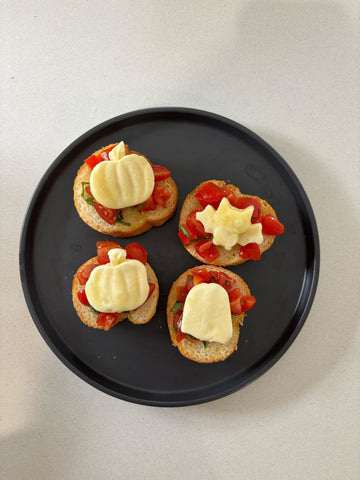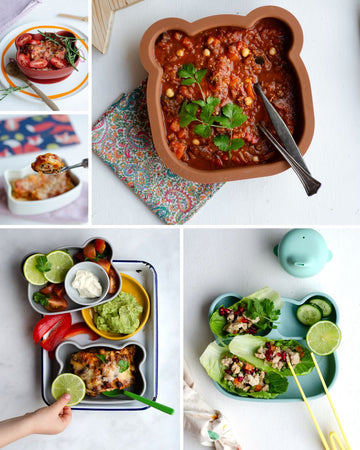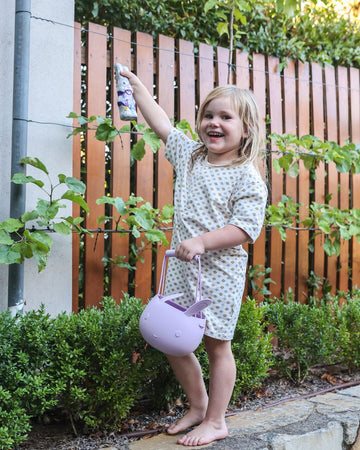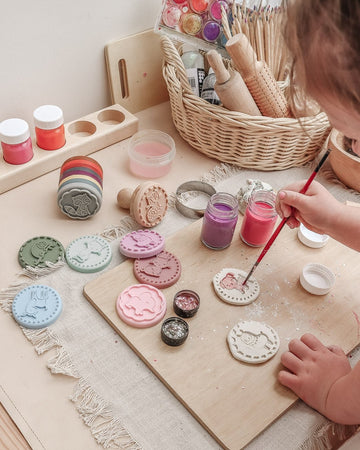Starting your baby on solids is a wonderful milestone filled with excitement, discovery, and quite a bit of mess!
So how do you know if your baby is ready, what can you do to ensure the process goes smoothly, and what exactly should you be feeding them?
Is baby ready?
Each baby is different, so it is a good idea to go by your child’s cues and the recommendation of your maternal child health nurse or doctor.
The current health guidelines recommend introducing solids to baby when they:
- Are between four to six months old
- Can to hold their own head up consistently
- Show interest in food around them by watching/reaching
- Open their mouth when you are eating
- Are still hungry after milk
- Have lost the tongue thrust reflex (pushing food out of the mouth with the tongue)
Prior to four months old, baby’s digestive system can struggle to cope with solid foods and their lack of head control makes choking a very real possibility, so it is best not to start early.
Homemade vs processed
Processed baby food is an easy, hygienic, and convenient way to feed baby on the go. Popping a pouch and a spoon in your nappy bag means no need to heat up food, no worries about temperature regulation while it sits in your bag for hours, and usually less mess.
Health officials and nutritionists recommend that you do keep them for outings only and attempt to give baby food you have made yourself when you’re home. This helps expose them to a wider range of textures and subtle variations in flavour that don’t come in standardised products and can help reduce the likelihood of fussy eating when older. However we all know that life throws us curve balls; with other children to care for, the school run, work, and myriad other commitments, so having a few in the cupboard is a good idea!

Puree vs baby led weaning
If you want to skip the puree stage and go straight to finger foods, then Baby Led Weaning (BLW) might be the solution for your family. BLW originated in the UK and is a process by which baby starts eating small servings of the family meal from the beginning. It means you don’t have to cook and mash dedicated meals for baby, and parents who have used both methods report their BLW babies have grown in to less fussy eaters than their puree fed babies.
It is a very personal decision and it is important to do what works for your baby and family.
Puree recipes
If you’re going down the puree road, then batch making and freezing ice cube portions of different food combinations is the most time effective way to go. Here are some of our favourite puree recipes for you to try:
Beyond purees
Once baby has successfully navigated purees (or if you’re going straight to baby led weaning), the possibilities for food expand greatly, for example:
- Fruit: Grated apple or pear, soft banana, ripe avocado, seedless watermelon, stone fruits with stone removed.
- Meat or alternative: Meat on a safe bone (chicken leg bone/lamb chop), firm tofu.
- Fish: Homemade fish fingers or fish cakes; flakes of cooked fish with no bones
- Vegetables: Cooked greens such as beans and broccoli, fingers of cooked potato, carrot or other vegetable, grated raw carrot.
- Bread: White ‘high-fibre’ or wholemeal bread, homemade rusks, toast (use any spread sparingly), sandwiches.
- Pasta: Cooked and cooled pasta.
- Eggs: Quarters of hard-boiled egg (yolk or whole), strips of omelette.
- Milk products: Thin slices or grated cheese, yoghurt, custard.
The other end
What goes in, must come out. With the introduction of solids, baby’s poo is going to change and it’s not going to be pretty. You will notice a marked increase in odour, colour, and texture as their digestive system moves from the easy process of eliminating milk to the more sophisticated system involved in digesting solids.
Whilst these changes can be confronting, they are completely normal, as is minor constipation which can generally be alleviated by a few constipation cure purees. Make sure to consult your medical team if the constipation persists or you notice any blood.
Allergies
The increase in food allergies is an alarming trend that worries almost all parents, particularly when introducing new foods. Previously, health professionals thought it best to avoid the major allergens, but newer research shows that providing small, consistent exposure to these can actually reduce the likelihood of developing food allergies.
From six months baby can be exposed to small tastes of cooked egg, wheat, nut pastes, cows' milk and fish (honey should be avoided until after 12 months due to the risk of botulism infection and whole nuts due to the choking risk).
If you have a child with a history of milk sensitivity – either you had to modify your diet to breastfeed or they had to go on a special non-allergenic formula, you should consult your paediatrician before introducing common allergens.
If you believe an allergic reaction is occurring, you should dial 000 immediately as it has the potential to be a life-threatening emergency. Do not get in your own car and drive.
A note on choking
Certain foods have a reputation for being easy to choke on, like cherry tomatoes and grapes and it is imperative that these foods are cut when they are introduced to you child once they are well in to their solid foods. However, ANY food is a choking risk which is why it is always important to supervise baby when eating.
True choking is silent. It is recommended you familiarise yourself with infant first aid with a reputable trainer to ensure you’re ready to jump to action should your baby need it.
Tips for success
As you navigate this new journey of solids, here are a few tips to help you:
- Eat together
- Use a soft spoon to protect baby’s gums and teeth
- Try foods multiple times
- Let baby play with her food
- Offer a wide variety of foods
- Model good eating
- Eat naked or in just a nappy so there is less washing!
- Keep a list of what you offered and when to track any reactions or allergies

Photo credit: @my.little.cutie.pies on Instagram
How did you approach your first time baby feeding? Let us know below in the comments.
Sign-up to receive updates, recipes and news from We Might Be Tiny.








